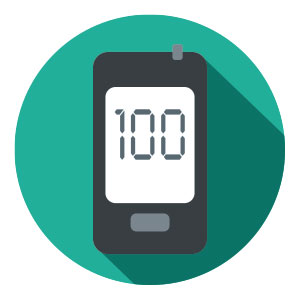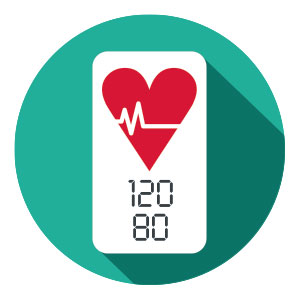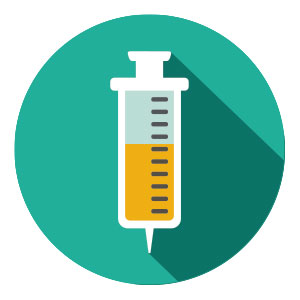Injection Perfection: Insulin 101 Insulin is the hormone that your...
Read MoreDiabetes Advantedge
MANAGE YOUR DIABETES WITH THE DIABETES ADVANTEDGE PROGRAM
Our Diabetes AdvantEdge Program is your complete diabetes care solution. Let our Pharmacists help you with your medications, testing supplies, blood pressure screenings, immunizations and nutrition information with Know your colors.

Diabetes AdvantEdge Program
Our Diabetes AdvantEdge Program is your complete diabetes care solution.

Savings on Diabetes Supplies
GE100 Blood Glucose Meter • FREE
GE Blood Glucose Test Strips 50 Ct. • $11.99
Lancet Device and Lancets • FREE
Insulin Pentips 4, 5 or 8mm 30 Ct. • $3.99


FREE Blood Pressure Screening
Check your blood pressure at the PharmaSmart kiosk located near the Pharmacy.

Flu & Pneumonia Shots
The CDC recommends that patients with diabetes receive their annual flu and pneumonia vaccination. Contact the Pharmacy for more information and to receive your immunization.
For more information on a free diabetes meter, please speak with a Pharmacist. New, transferred and authorized refills are included as ordered by a prescriber. Maximum of 200 units every 30 days for each prescription. Drug lists are subject to change.

Find out more about diabetes
So I Have Diabetes… What Now?
So I Have Diabetes… What Now? 1.5 million Americans are...
Read MoreDiabetes Control with Medication and Blood Glucose Monitoring to Prevent Complications
Diabetes Control with Medication and Blood Glucose Monitoring to Prevent...
Read MoreEnjoy these diabetes-friendly recipes
Know your colors nutrition guide at Price Chopper and Market 32
The Carb Smart, Heart Smart and Whole Grain nutrition attributes include nutrition standards used by federal and non-profit health organizations to encourage eating foods that offer nutrient benefits, such as nutrient dense whole foods, and help shoppers reduce the intake of sodium, simple and added sugars and fats that can negatively impact health. The color guides are on shelf tags in stores, and may help time-crunched shoppers locate items that meet lifestyle goals. Please see the whole program for the full criteria.
Living Well with Diabetes
Your Price Chopper and Market 32 Pharmacy and Nutrition Team can help you take care of Diabetes.
Whether just diagnosed or managing diabetes for some time, our Pharmacists and Registered Dietitian-Nutritionist have information and resources that can help you enjoy a healthy, happy life. Important guidance to follow:
- Always follow your health care provider’s directions.
- Talk to your health care provider, diabetes educator, pharmacist or dietitian when you have questions.
- Be sure to take medications as directed. Talk to your Price Chopper Pharmacist about the Diabetes AdvantEdge program and other ways to manage your medications. We have courtesy refills, mobile text alerts, and a mobile app available.
Eating Well with Diabetes
There are different ways to eat well for diabetes. The American Diabetes Association recommends an individualized plan, emphasizes management of carbohydrate intake, and promotes intake of nutrient-rich and higher fiber whole foods, including beans, dark leafy greens, citrus, berries, tomatoes, salmon, nuts, whole grains, lean proteins, and low fat dairy including milk and yogurt. Reading food labels and balancing intake with activity is also important. Your Health Care Provider will assist you with plan guidelines and referrals to a registered dietitian-nutritionist for your personal plan for eating and managing well. www.diabetes.org
FOOD FACTS
What is a Carbohydrate? Carbohydrates – may also be called “Carbs”. Carbohydrates supply essential energy used by your brain, muscles and organs, and are found in fruits, vegetables, dairy and all types of grain-based foods. They are also found in sugar-sweetened beverages, juice, desserts and candy. Learning to balance carbohydrate intake is key to good diabetes management.
What is Healthy Fat? Healthy fats in small amounts help balance meals, increase satiety, add flavor and assist with absorption of some vitamins. Healthy fats are found in oils like olive, canola, soy, and sunflower; nuts and seeds; and avocados.
What is a Good Source of Protein? Protein helps balance meals, and supports muscle growth and maintenance, healthy weight, and satiety. Protein can be found in a wide range of foods, including meats, poultry, seafood, dairy, whole grains, legumes and beans. There is also a small amount of protein in vegetables.

5 Fresh Food Tips for Diabetes...
Learning more about food and diabetes will lower your stress and help you enjoy good food and good health. Follow up on appointments with a registered dietitian-nutritionist or diabetes educator to get personalized nutrition care, ideas and short cuts. Get started with these tips:
- Don’t skip meals or make big changes to food habits – eat breakfast, lunch and dinner, and perhaps a small snack if needed.
- Trade regular sweetened drinks like soda, iced teas or specialty coffees for sugar-free or low sugar versions.
- Enjoy more vegetables that are not starchy – salads, raw and cooked spinach, broccoli, asparagus, tomatoes – double up, or use half of your plate as your guide.
- Eat small servings of carbohydrate (carb)-rich foods like bread, pasta, and potatoes as part of balanced meals. Trade regular breads (90-110 calories/slice) for light bread, (45 calories/slice), explore whole grain sandwich thins, or high fiber English muffins for breakfast and lunch options.
- Save grocery receipts, write down what you like and what you eat for meals and snacks. Bring those receipts and lists to your appointments. Your healthcare team can review with you and support your smart choices.

Tips to Make a Great Plate
- Portion positive – use an 8- or 9-inch plate (sometimes called a salad plate) v.s. the standard 11-inch dinner plate for most meals. The smaller plate size leads to smaller portion sizes – you enjoy the same foods, but in more healthful portions due to default space management on a smaller plate. (It also helps with budget management!)
- Make half the plate fruits and vegetables. Use fresh, frozen, canned or 100% juice items. Double servings on favorites (except juice, please limit to 4 OZ per day) makes it easy to eat more!
- Make ¼ of the plate whole grains or starchy vegetables. Brown rice, quinoa, barley, oats, cereals, pasta, ancient grains – there are many ways to enjoy whole grains. Use the Whole Grain and/or Carb Smart shelf tag guide (https://www.pricechopper.com/know-your-colors/) in stores to choose well. For other starchy foods, enjoy small servings of roasted or baked potatoes/sweet potatoes or peas.
- Use herbs, spices and fresh citrus juice and zest to add flavor and lower sodium.
- Opt for low fat dairy – 2 to 3 servings per day.
- Go easy on sweets, including drinks and desserts. Explore seltzers, spritzers and fruit-based desserts to satisfy your sweet tooth and get more produce.
- Get some great recipes, tips and hacks at the Diabetes Food Hub,
BEST PRACTICES - Managing Diabetes Well
• See your Diabetes Provider regularly. Share any changes to health, resources, and activity to get support and guidance.
• Work with your Pharmacist and follow all medication directions. Studies show better medication management leads to better diabetes management. Never miss a dose when you use the Price Chopper Pharmacy App to order medications – you can even order medications/insulin for your pets! Ask your pharmacist if delivery is available in your area for additional savings/convenience.
• Test your blood glucose as directed by your Provider. Ask your Price Chopper/Market 32 Pharmacist about testing devices and supplies available at the store.
• See a Certified Diabetes Educator and Registered Dietitian-Nutritionist upon diagnosis and at least once per year.
• Complete your lab work for A1c, glucose, and cholesterol as directed by your Provider.• Stay up to date on your annual eye exam.
• Get your annual flu shot and pneumonia shot, as well as other recommended vaccinations.
• Check your blood pressure – the Pharmasmart Blood Pressure kiosk at Price Chopper Pharmacies can help you keep track.
Learn more: American Diabetes Association http://www.diabetes.org

Shopping Savvy - Know Your Labels
Shopping with health in mind is smart. Start with learning more about food labels and understanding serving sizes. Food labels have been updated, to help shoppers with information on added sugars and most current nutrient recommendations. Read all food labels, even on familiar or staple items – products change, and being mindful of label reading is a key part of managing diabetes.
The updated nutrition facts label now has a section for “Added Sugars”, part of the total amount of carbohydrate in an item serving. Learn more about label reading and serving sizes at the links below.
Food Labels — Reading a food label (FDA infographic)
https://www.fda.gov/food/food-labeling-nutrition/changes-nutrition-facts-label
Serving Smarts — Serving sizes (FDA infographic)
https://www.fda.gov/consumers/consumer-updates/food-serving-sizes-get-reality-check
Another resource is the https://www.pricechopper.com/know-your-colors/ nutrition guides, on shelf tags and on the product catalog at www.pricechopper.com. https://shop.pricechopper.com/shop – they are nutrition guides that can assist with making informed choices, such as Low Sodium, Whole Grain, and Carb Smart. Always read the label to ensure products will meet your needs. The guides do not replace nutrition and medical care education recommendations.
Content on this website is for general information purposes only, and is not intended or implied to be a substitute for professional medical advice. Always seek the advice of your physician or other qualified health provider prior to starting any new treatment or with questions regarding a medical condition.










